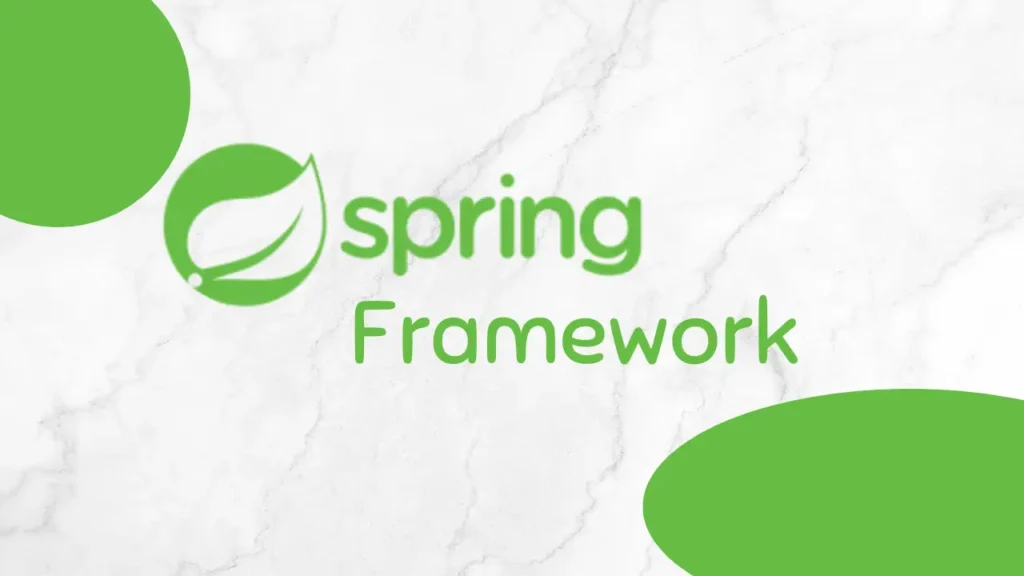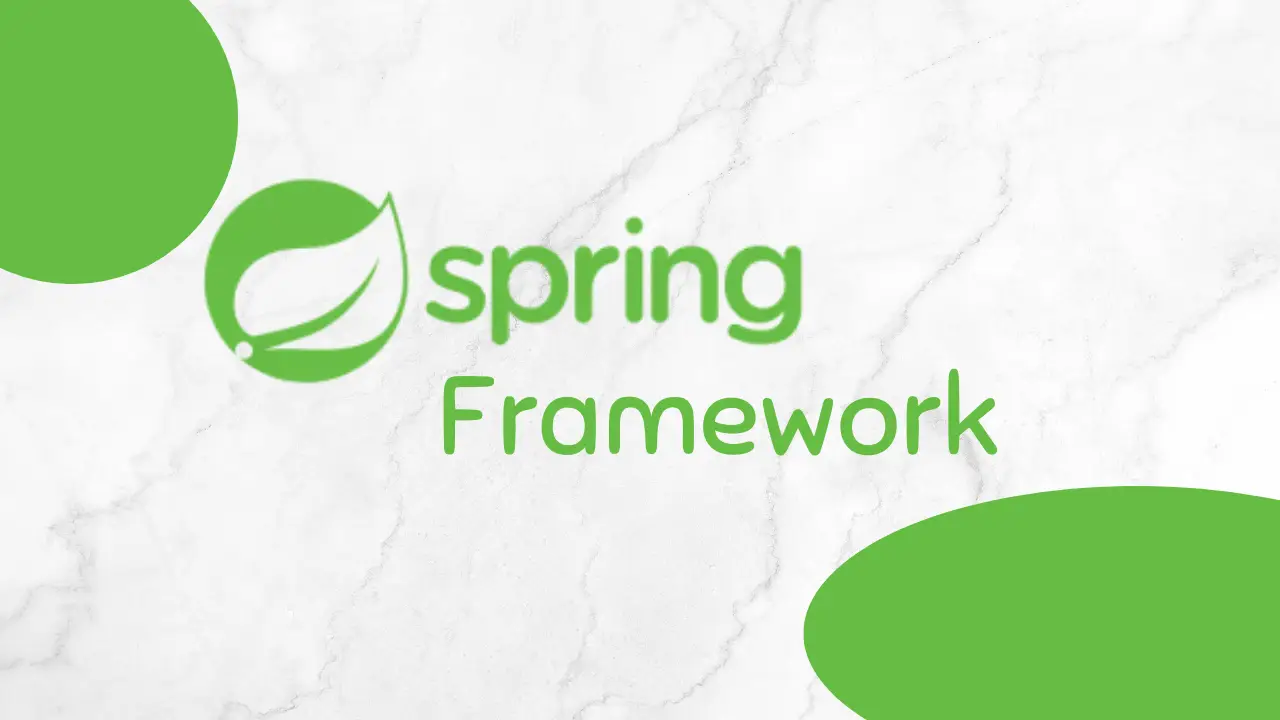
The Spring Framework is a popular framework for building Java applications. It was created to simplify the development of complex software, making it easier to create and maintain applications.
The Spring Framework provides a comprehensive programming and configuration model for modern Java-based applications. It offers various features, such as dependency injection, aspect-oriented programming, and data access, which help developers build robust applications quickly. The framework is widely used in enterprise applications due to its flexibility and ease of use.
Its core features can be used by any Java application, although there are many extensions for building web applications on top of the Java Enterprise Edition platform.
Why Use the Spring Framework?
The Spring Framework offers several advantages that make it popular among developers. One of the main reasons to use Spring is its ability to manage dependencies in an application.
By using dependency injection, Spring allows objects to be injected with their dependencies, making the code cleaner and easier to test. The Spring Framework also provides a lightweight and transparent solution that does not require any specific programming model or layer.
This means that developers can use the parts of Spring that they need, without having to use the entire framework. Spring also supports different types of transaction management, which is crucial for enterprise applications. Its simplicity, flexibility, and modular approach help reduce the complexity of coding and make applications easier to maintain.
Key Features of the Spring Framework
The Spring Framework is packed with features that help developers build reliable and scalable applications. Some of the key features include:
- Dependency Injection: This feature helps in managing the dependencies of different objects, reducing the amount of boilerplate code and making the application easier to test.
- Aspect-Oriented Programming (AOP): AOP allows developers to add cross-cutting concerns like logging, security, and transaction management without modifying the core logic of the application.
- Spring MVC: This module provides a framework for building web applications. It uses the Model-View-Controller (MVC) pattern, which separates the application into three interconnected components.
- Data Access: Spring provides easy integration with various data access technologies like JDBC, Hibernate, and JPA. This helps in accessing, storing, and managing data with minimal configuration.
- Transaction Management: Spring offers a consistent way of managing transactions across different resources, making it easier to handle operations that span multiple data sources.
How Does Dependency Injection Work in Spring Framework?
Dependency Injection (DI) is a core concept of the Spring Framework. It allows objects to be injected into other objects, rather than creating them directly. This approach promotes loose coupling and enhances testability.
In Spring, DI can be achieved through constructor injection, setter injection, or field injection. Constructor injection is done by passing the required dependencies as parameters to the constructor of the class. Setter injection involves using setter methods to inject the dependencies. Field injection, on the other hand, uses annotations to inject the dependencies directly into the fields of the class.
By managing the dependencies through DI, the Spring Framework simplifies the application configuration and makes the code cleaner and easier to maintain.
How Does Spring Framework Handle Transactions?
Transaction management is a critical aspect of any enterprise application, and the Spring Framework provides a consistent approach to handling transactions. Spring supports both programmatic and declarative transaction management. Programmatic transaction management involves writing code to manage transactions manually, which can be useful for complex scenarios.
Declarative transaction management, on the other hand, uses annotations or XML configuration to define the transaction boundaries. This approach is simpler and more readable, as it allows developers to manage transactions without having to write a lot of boilerplate code.
Spring’s transaction management is highly flexible and can be integrated with various transaction management APIs, such as JTA, JDBC, Hibernate, and JPA.
What is Aspect-Oriented Programming in Spring Framework?
Aspect-Oriented Programming (AOP) is a feature of the Spring Framework that helps in separating cross-cutting concerns from the business logic. Cross-cutting concerns are aspects of the program that affect multiple modules, such as logging, security, and transaction management. By using AOP, these concerns can be added to the application without modifying the core logic.
Spring’s AOP module provides the tools to define these aspects and weave them into the application at runtime. This approach improves modularity and makes the code easier to maintain. AOP in Spring is implemented using proxies, which are created either at compile time or at runtime. This allows developers to add additional behavior to objects dynamically, without altering their original code.
How to Build Web Applications with Spring Framework?
Spring MVC is a module of the Spring Framework that is used for building web applications. It follows the Model-View-Controller (MVC) pattern, which helps in separating the application logic, user interface, and input control.
The Model component represents the application data and business rules, the View displays the data to the user, and the Controller handles the user input and updates the Model accordingly. Spring MVC provides a flexible and powerful way to handle web requests and responses.
It supports different types of views, such as JSP, Thymeleaf, and FreeMarker, allowing developers to choose the best fit for their application. Spring MVC also includes built-in support for RESTful web services, making it easy to build REST APIs.
What are the Benefits of Using the Spring Framework?
The Spring Framework offers numerous benefits that make it a popular choice for building Java applications. Some of these benefits include:
| Benefits | Description |
|---|---|
| Ease of Use | Spring simplifies Java development by providing easy-to-use APIs and reducing the amount of boilerplate code. |
| Flexibility | Spring is highly modular, allowing developers to use only the parts they need. |
| Dependency Management | Dependency injection makes it easier to manage dependencies and improves testability. |
| Transaction Management | Spring provides a consistent approach to managing transactions across different resources. |
| Integration with Other Tools | Spring integrates well with various data access technologies, frameworks, and tools. |
| Community Support | Spring has a large and active community, offering extensive documentation, tutorials, and support. |
The Spring Framework is designed to make Java development easier and more efficient. Its modular approach allows developers to choose the parts they need, without having to use the entire framework. This makes it a flexible and powerful tool for building enterprise-level applications.
How to Get Started with the Spring Framework?
Getting started with the Spring Framework is easy, thanks to its comprehensive documentation and community support. To begin, you will need to set up a development environment with Java and a build tool like Maven or Gradle.
The Spring Framework can be added to your project as a dependency through these build tools. Spring Boot, an extension of the Spring Framework, is often used to simplify the setup process. It provides a set of default configurations and a command-line interface for quickly creating Spring applications.
Spring Boot reduces the amount of configuration needed and allows developers to focus on writing code. By using Spring Boot, you can get a Spring application up and running in minutes.


